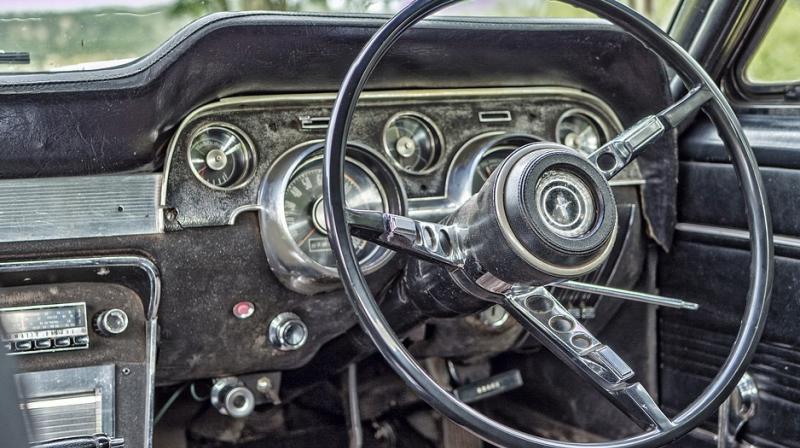119-year-old electric car to stay in Lansing
Stephens is still fighting to preserve her great-grandfather's legacy, which is deeply rooted in Lansing.

Debbie Stephens remembers raising her hand in her East Lansing Junior High School class to correct a teacher who told the students that Henry Ford invented the auto assembly line.
"My great-grandfather did that before he did," Stephens recalls saying.
Ford's claim to fame was the mechanised assembly line, but it was Stephens' ancestor Ransom Eli Olds who came up with the idea for mass production. Workers in his factory would roll chassis on carts to allow parts to be added to them.
More than a half-century later, Stephens, who is now 66 and lives in Dublin, Ohio, is still fighting to preserve her great-grandfather's legacy, which is deeply rooted in Lansing.
Debbie Stephens, her husband Peter Stephens, and a group of more than a dozen auto historians, companies and electric worker unions have scored a major victory in their efforts to keep that history alive in Lansing.
They spent three years raising money — they won't say how much — to buy the only known surviving 1899 Olds electric car.
The 119-year-old four-seater has been on loan to the R.E. Olds Transportation Museum, but it was in danger of going into the hands of a private collector.
"It's so much a part of R.E. Olds and the history of this museum it couldn't go anywhere but here," Bill Adcock, executive director of the museum, told the Lansing State Journal.
It cements Olds' legacy as the only auto pioneer who experimented with four types of power on early cars: steam, gas, electric and diesel.
While electric cars seem like a recent development, early auto pioneers experimented with them. Though they were considered reliable, they were also very expensive.
Olds built his first vehicle in 1887, a three-wheel steam-powered car with a gas boiler. By 1899, he had developed several different types of motorised vehicles. That's the year the Olds Motor Vehicle Co. and Olds Gasoline Engine Works were combined to form Olds Motor Works. Manufacturing was moved to Detroit.
Around that time, he was experimenting with electric cars and offered them for sale, though it's unclear if any were ever sold. Olds electric was priced at USD 1,600, which is USD 48,000 in today's prices. Other companies sold 8,000 electric cars by 1900, according to a history supplied by the museum.
A disastrous 1901 factory fire is believed have destroyed 15 Olds electric cars. The surviving electric Olds was likely off-site at the time of the fire.
After the fire, Olds moved back to Lansing and dropped the electric vehicles to concentrate on the gas-powered Curved Dash, Debbie Stephens said.
"The gasoline cars were cheaper to produce. His goal was to make cars for what became the middle class," she said.
But even if Olds continued to produce electric vehicles, he likely would have "hit the same wall" as other electric car manufacturers, said Peter Crisitello, a New Jersey auto history buff and expert on electric cars. Advancements in internal combustion engines made them the favoured type of car, and gasoline power became the accepted technology over electric and steam for the rest of the 20th century.
With electric vehicles in the rear-view mirror and all but forgotten, the rare 1899 Olds electric was uncovered in a Lansing garage in 1959. Two brothers, Don and Ken McDowell, purchased the car and stored it for years. In 1996, they loaned it to the R.E. Olds Transportation Museum.
The brothers have since died. After their deaths, the descendants started getting inquiries from car collectors to purchase it.
Stephens and others feared that the car might be sold to a collector in Europe or Asia, never to be seen in Lansing again.
The three-year fundraising effort was led by Lansing attorney Jim Neal, a volunteer at the museum.
Neal and Adcock aren't spilling how much they paid.
"It wouldn't matter if I paid a dollar or USD 100,000. It's priceless. It's one of a kind," Adcock said.
Debbie Stephens said she's pleased that the car is staying. Though she left Lansing after college, her sister, Diana Tarpoff, and a cousin, Clela Gray, still live in the area.
Stephens and her husband also own a one-of-a-kind, crowd-pleaser pair of cars called a "Mama" and "Baby" Olds, built in 1906. The Baby Olds is a miniature copy of the Mama. The cars still run. They've been on display at the museum since 2008 after the couple purchased them in an auction.
"We felt it was important to keep these in front of the public because the automotive history is disappearing. And that's something Peter and I and many others are concerned about, especially here in Lansing," she said.
Click on Deccan Chronicle Technology and Science for the latest news and reviews. Follow us on Facebook, Twitter.

